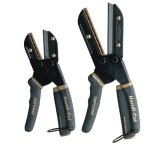starcrafttom
Active member
- Joined
- Nov 7, 2003
- Messages
- 7,965
- Reaction score
- 3
- C Dory Year
- 1984
- C Dory Model
- 27 Cruiser
- Hull Identification Number
- wn something
- Vessel Name
- to be decided later
So Saturday Susan and I helped out my duck club, Washington Waterfowl Association , with a clean up on a public hunting area on Farmed Island in Conway. We boat in clean up all the blinds or shells and trash. It was not to bad. On the way out I had to tow the club Pres. because his 9 hp mercury would not start. Now there 20 guys in 5 boats, all open sled, waiting for him to get the motor going. No amount of cord pulling or spark plug changes was getting it started again. so I ended up towing him from my stern cleat.
The commits above made me remember a important tip that I always do if possible. If I am towing or being towed I always wrap the line around a cleat but do not tie it off. I hold the tag end in my hand encase I have to let go of the tow. You can not always do this because of being alone or some times size of boat. I also always make sure that I or who ever is watching the line has a good knife out and ready. well that was one more tow for the year.
The commits above made me remember a important tip that I always do if possible. If I am towing or being towed I always wrap the line around a cleat but do not tie it off. I hold the tag end in my hand encase I have to let go of the tow. You can not always do this because of being alone or some times size of boat. I also always make sure that I or who ever is watching the line has a good knife out and ready. well that was one more tow for the year.




